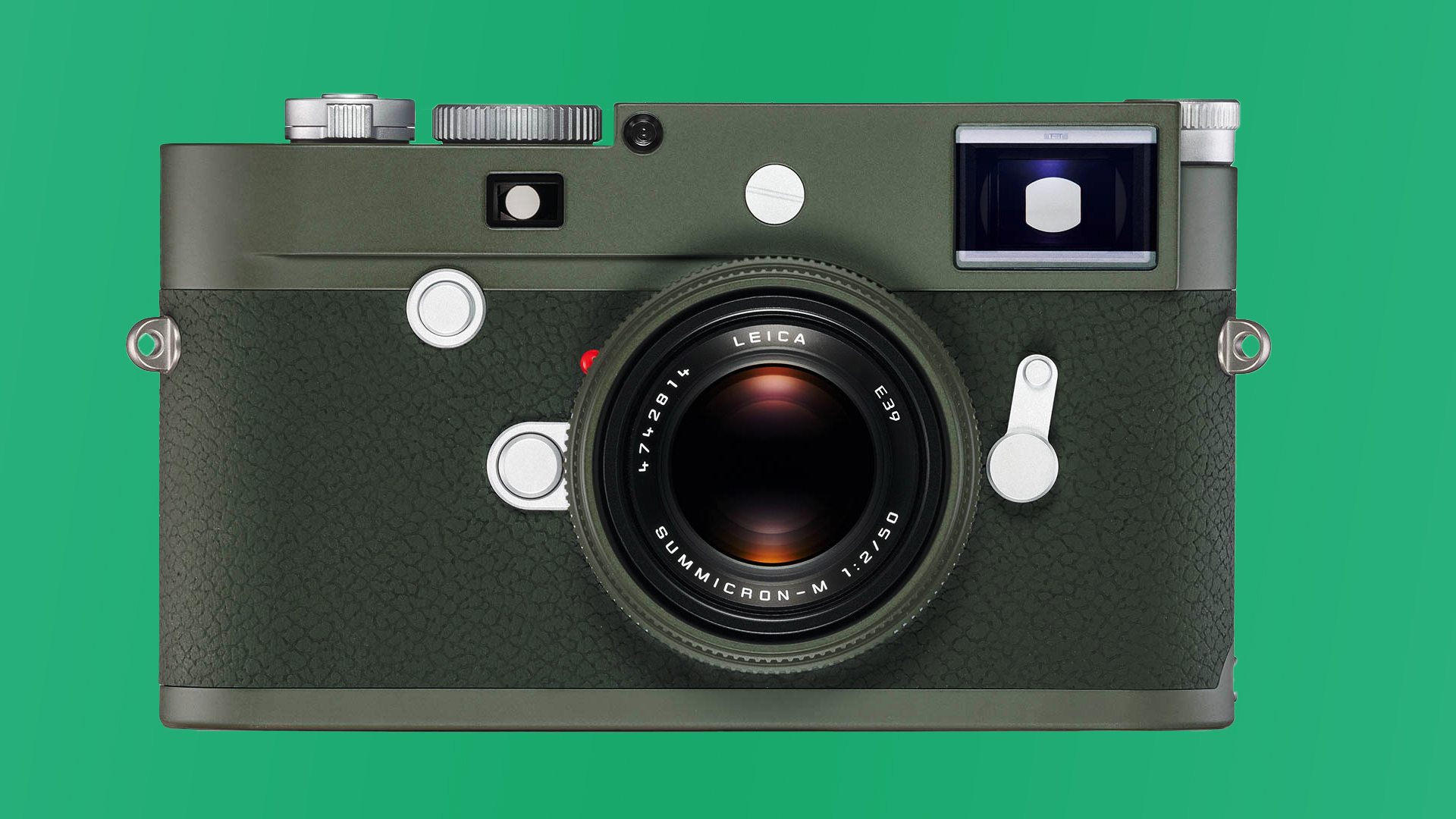Digital Camera World Verdict
The Sony FE 16-35mm f/2.8 GM i’s an absolutely first-class lens that does full justice to the high-resolution prowess of the Alpha 7R series cameras. It also faces strong competition from some very good third-party lenses from Sigma and Tamron, however, so good as it is, it's no longer the only high-quality ultra-wide lens for Sony full frame mirrorless cameras.
Pros
- +
Consistently excellent performance
- +
You can attach filters
Cons
- -
Expensive compared to rivals
- -
Not as wide as the FE 12-24mm
Why you can trust Digital Camera World
Start here
• The best camera lenses to buy
What camera do you have?
• Best Canon lenses
• Best Fujifilm lenses
• Best Nikon lenses
• Best Olympus lenses
• Best Panasonic lenses
• Best Pentax lenses
• Best Sony lenses
Compared with the Zeiss-badged 16-35mm f/4 Vario- Tessar T* zoom that was previously top dog in Sony’s wide-angle lens line-up, this G Master lens was about twice the price when it was launched.
Both are constant-aperture designs, but the new lens is an f/stop faster. As a result, it’s noticeably bigger and heavier, weighing in at 680g compared with the Zeiss lens’s 518g. The market has moved on, however, and the 16-35mm G Master has some newer and much tougher competition, both from within the Sony range, and from third-party lens makers Sigma and Tamron.
The Sony FE 16-35mm f/2.8 GM omits the old Zeiss lens's optical stabilisation, but that’s not an issue if you shoot with a second-generation or later Sony Alpha 7 or A9 full frame mirrorless cameras, which have built-in sensor-shift stabilisation.
Specifications
Full-frame compatible: Yes
Effective focal length: 16-35mm (24-52.5mm APS-C)
Image stabiliser: No
Minimum focus distance: 0.28m
Max magnification factor: 0.19x
Manual focus override: Yes
Focus hold switch: Yes
Internal zoom/focus: No/Yes
Filter size: 82mm
Iris blades: 11
Weather seals: Yes
Supplied accessories: Hood, soft case
Dimensions (dia x length): 89 x 122mm
Weight: 680g
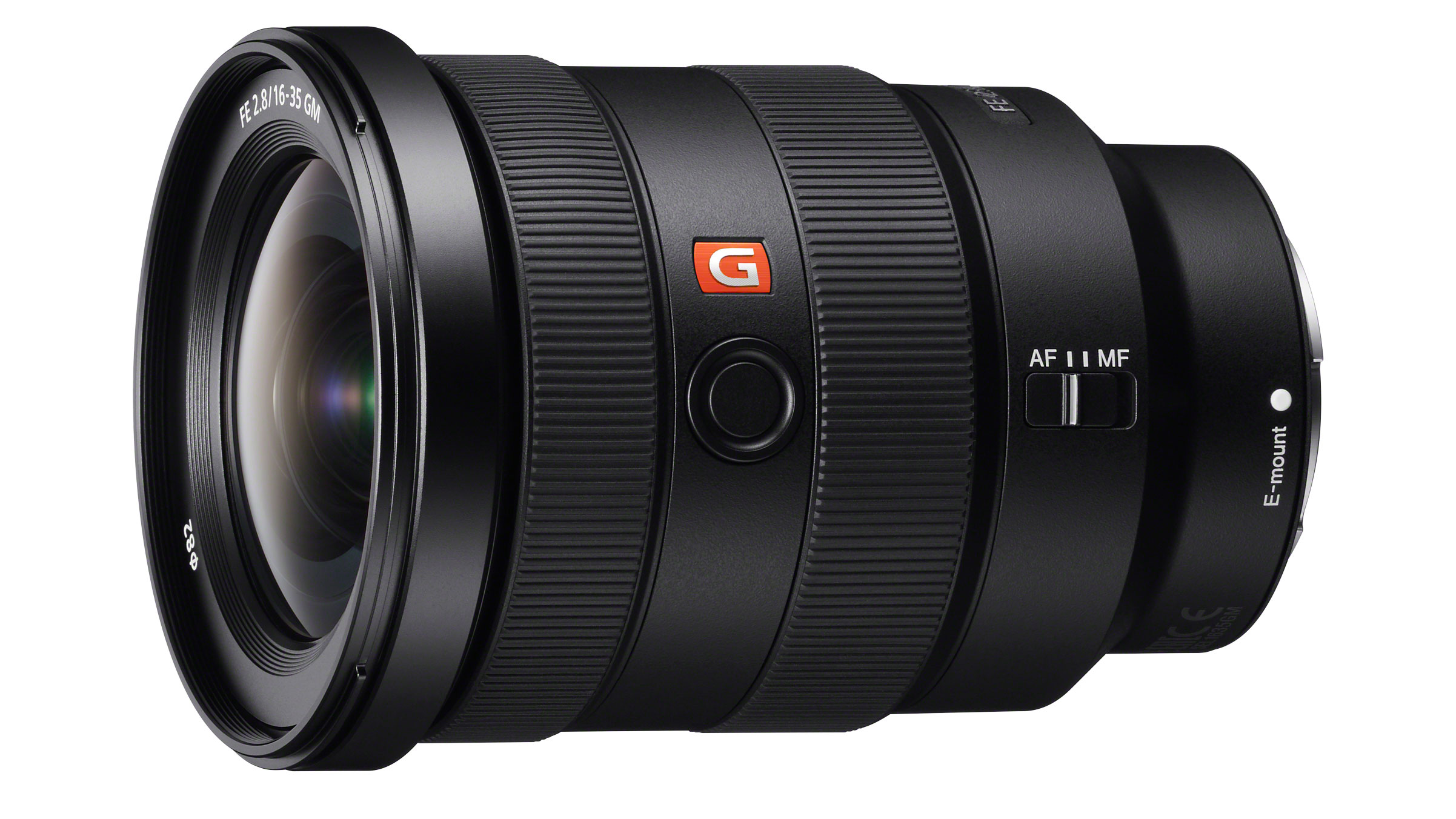
Build and handling
Typical of G Master lenses, the 16-35mm has impeccable build quality and is supplied with a lens hood and a case. There’s a full set of weather-seals, including a rubber seal around the mounting plate, and a fluorine coating on the front element to repel muck and moisture.
Unlike the Sony FE 12-24mm f/4 G, this lens has a detachable hood and an 82mm attachment thread for easily fitting filters. Enhancements include a pair of XA (eXtreme Aspherical) elements and a better rounded aperture based on 11 rather than seven diaphragm blades. The upshot is smoother bokeh: this can be an important factor given the reduced depth of field compared with the 12-24mm lens, which comes from the longer maximum focal length and wider available aperture.
The focus hold button can be customised to enable other functions, including Eye AF, AF-on and aperture preview. Weather-seals are fitted around all joints and switches, and to the mounting plate, and the front element is fluorine-coated.
Performance
The autofocus speed is rapid yet near-silent, thanks to dual DDSSM systems that drive two groups of lens elements independently. Given its modest size for an f/2.8 wide-angle zoom, vignetting is fairly low, even at the shortest focal length. Sharpness and contrast are spectacular and, as with the wider Sony FE 12-24mm lens, the Nano AR coating does an excellent job of fending off ghosting and flare.
Lab tests
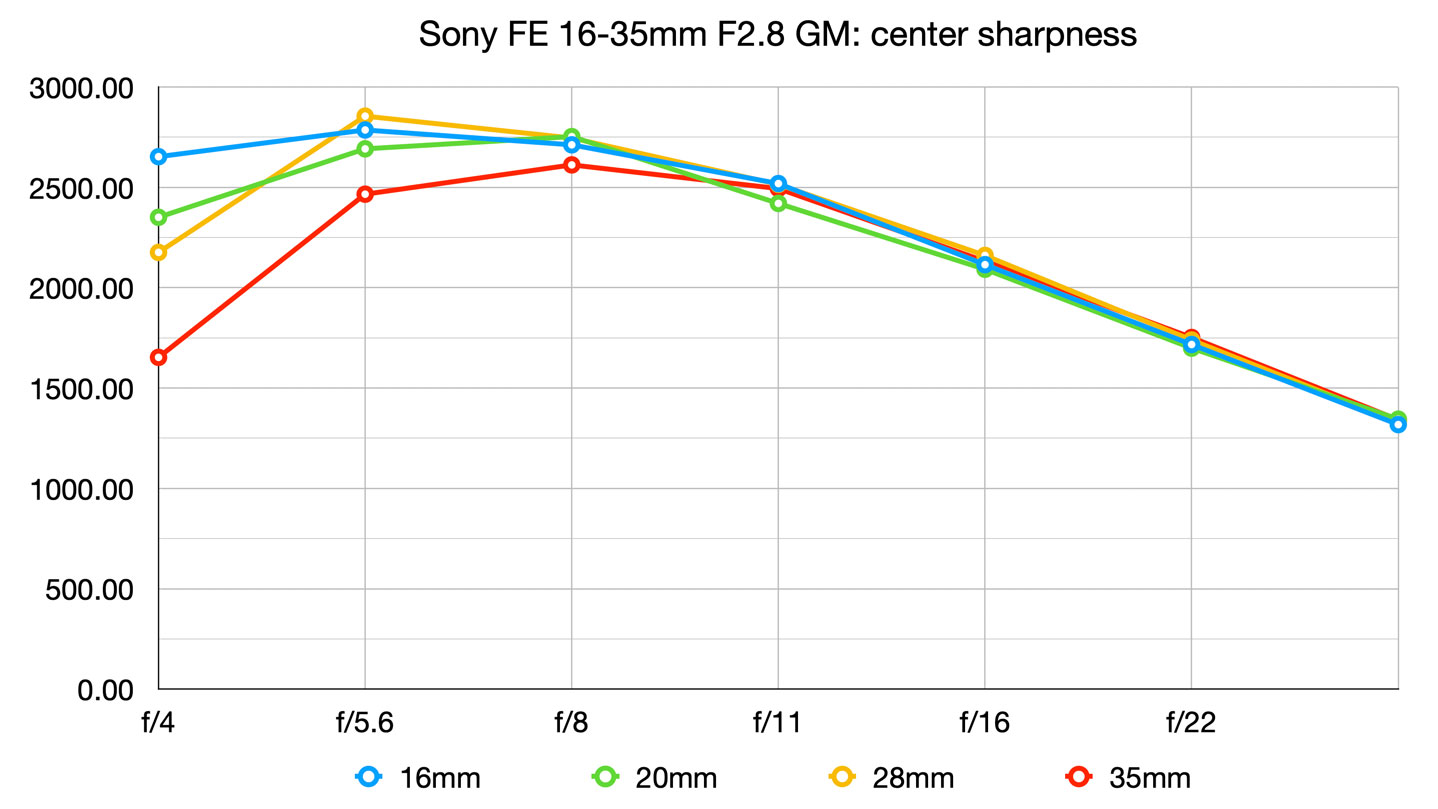
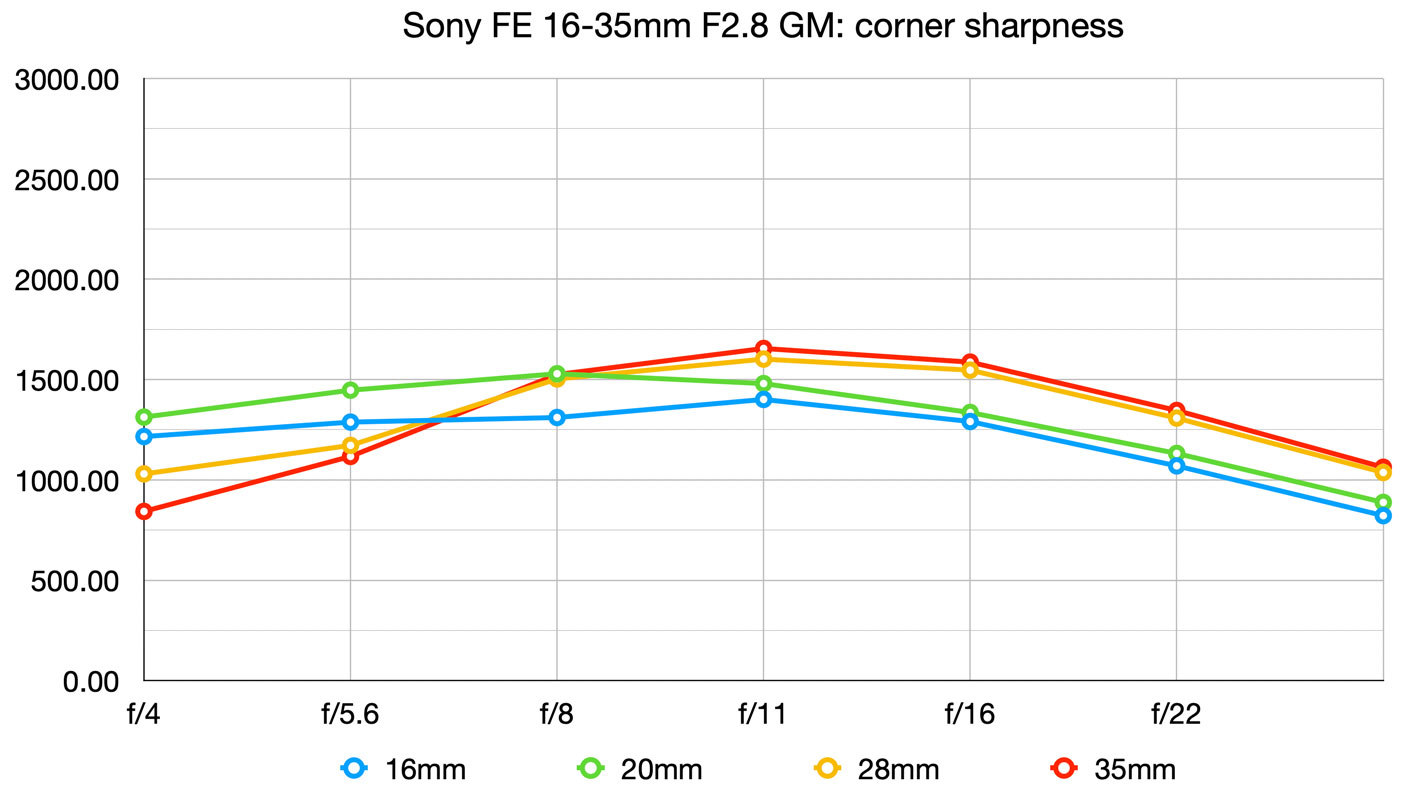
The levels of sharpness from the Sony FE 16-35mm f/2.8 GM are superb, even when shooting wide-open at f/2.8. It's an expensive lens, but it's this kind of reliability and consistency that you're paying for. The corner sharpness is lower than the center sharpness, but still very good for a lens of this type, especially when shooting lens charts at close range rather than more distant subjects.
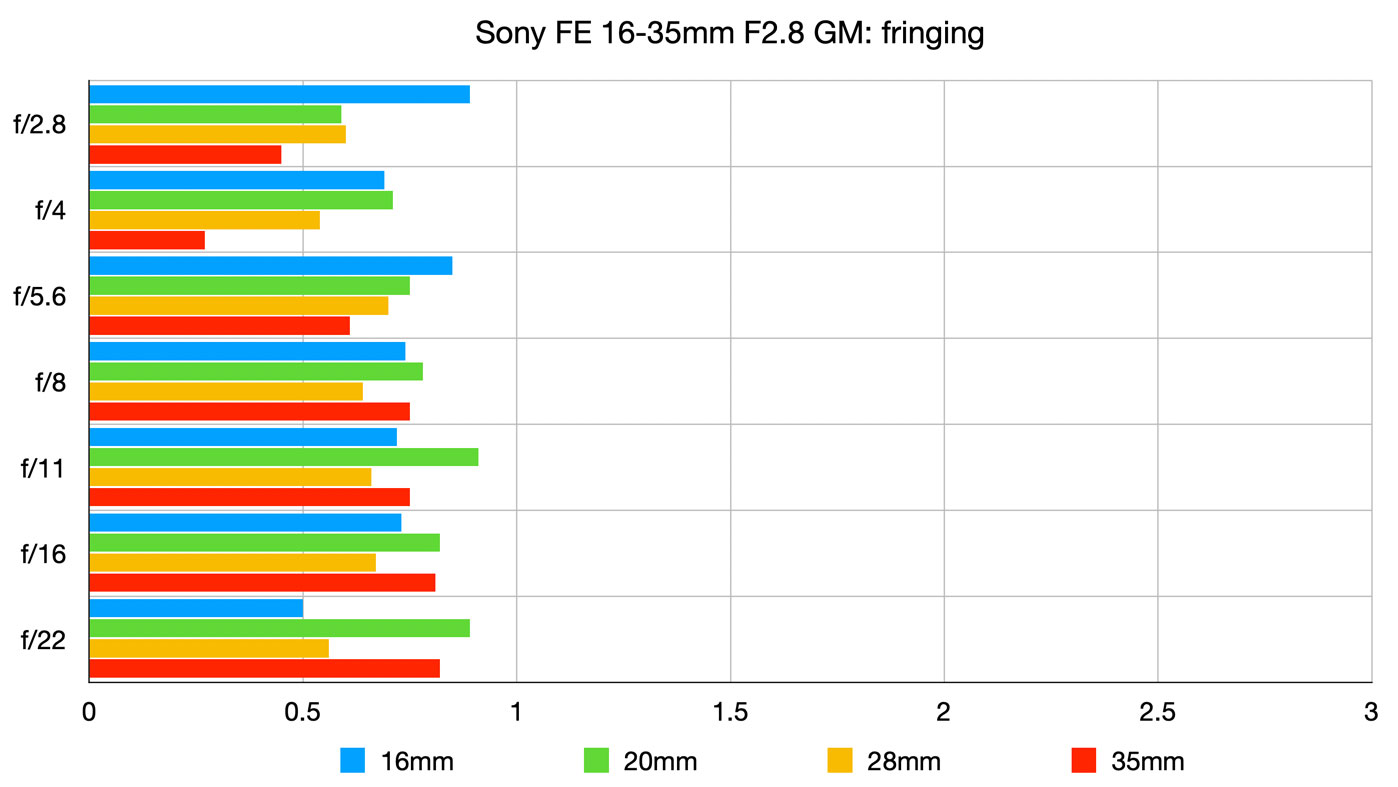
The amounts of color fringing are measurable but pretty negligible at any zoom setting, even in the corners. It's unusual to see this level of consistency in an ultra-wide zoom lens.
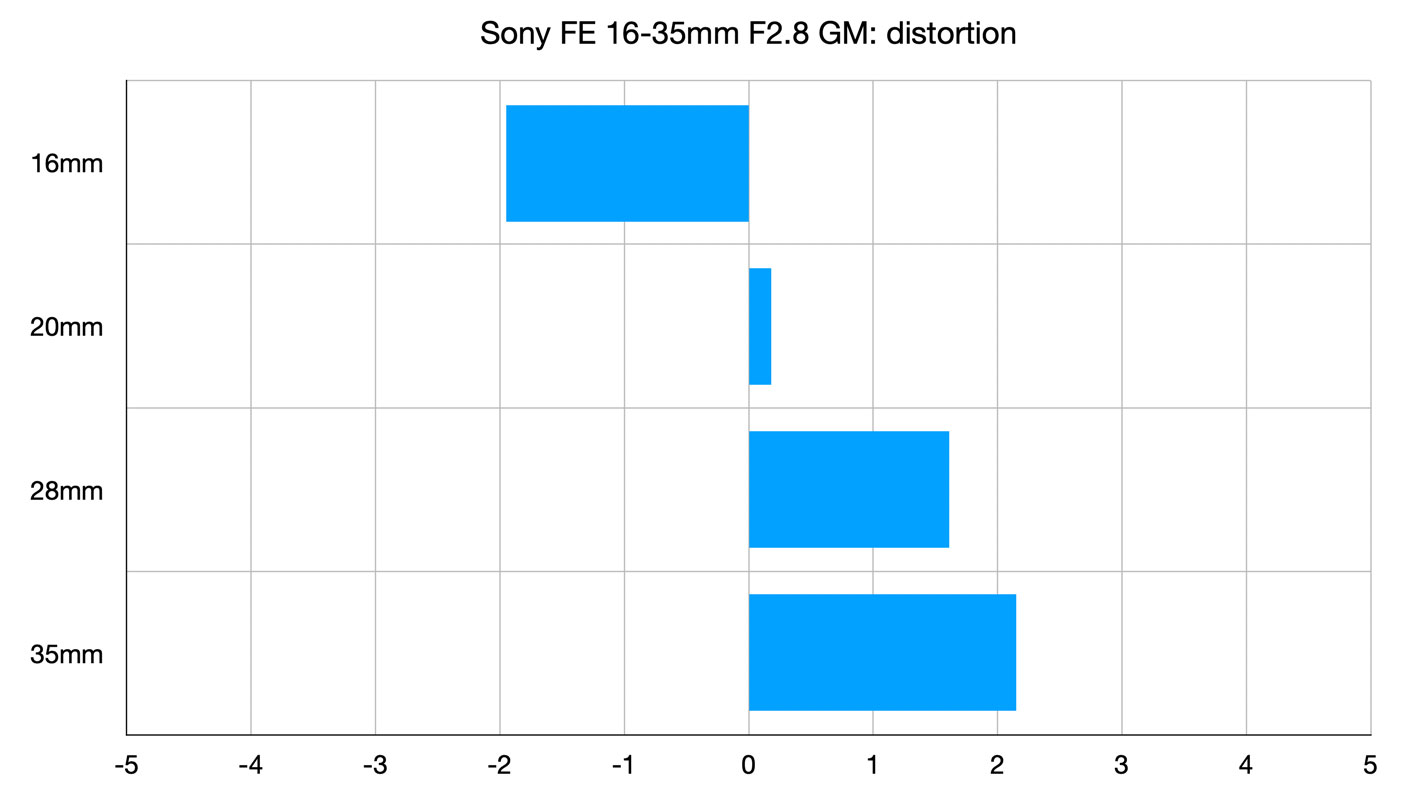
Barrel and pincushion distortions are well-controlled, at short and long zoom settings. There is noticeable barrel distortion at 16mm which is pretty much neutral by 20mm and turning into mild pincushion distortion at 28mm and beyond.
Verdict
The Sony FE 16-35mm f/2.8 GM is an absolutely first-class lens that does full justice to the high-resolution prowess of the Alpha 7R series cameras. It also faces strong competition from some very good third-party lenses from Sigma and Tamron, however, so good as it is, it's no longer the only high-quality ultra-wide lens for Sony full frame mirrorless cameras.
Cost-conscious buyers should also take a look at the rather good and massively cheaper Tamron 17-28mm f2.8 Di III RXD, the Sigma 14-24mm f2.8 DG DN Art and Sony's own FE 12-24mm f4 G.
Read more:
• These are the best Sony lenses today
• The best wide-angle lenses right now
• The best Sony cameras to buy
Matthew Richards is a photographer and journalist who has spent years using and reviewing all manner of photo gear. He is Digital Camera World's principal lens reviewer – and has tested more primes and zooms than most people have had hot dinners!
His expertise with equipment doesn’t end there, though. He is also an encyclopedia when it comes to all manner of cameras, camera holsters and bags, flashguns, tripods and heads, printers, papers and inks, and just about anything imaging-related.
In an earlier life he was a broadcast engineer at the BBC, as well as a former editor of PC Guide.



